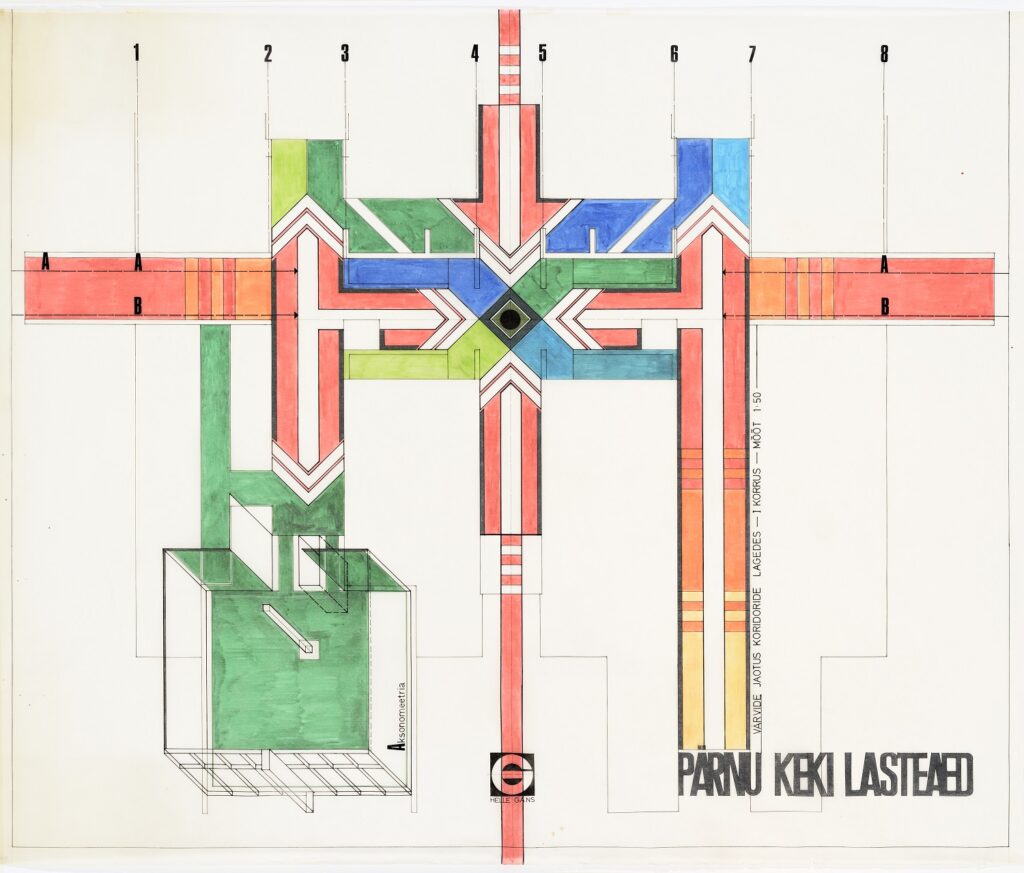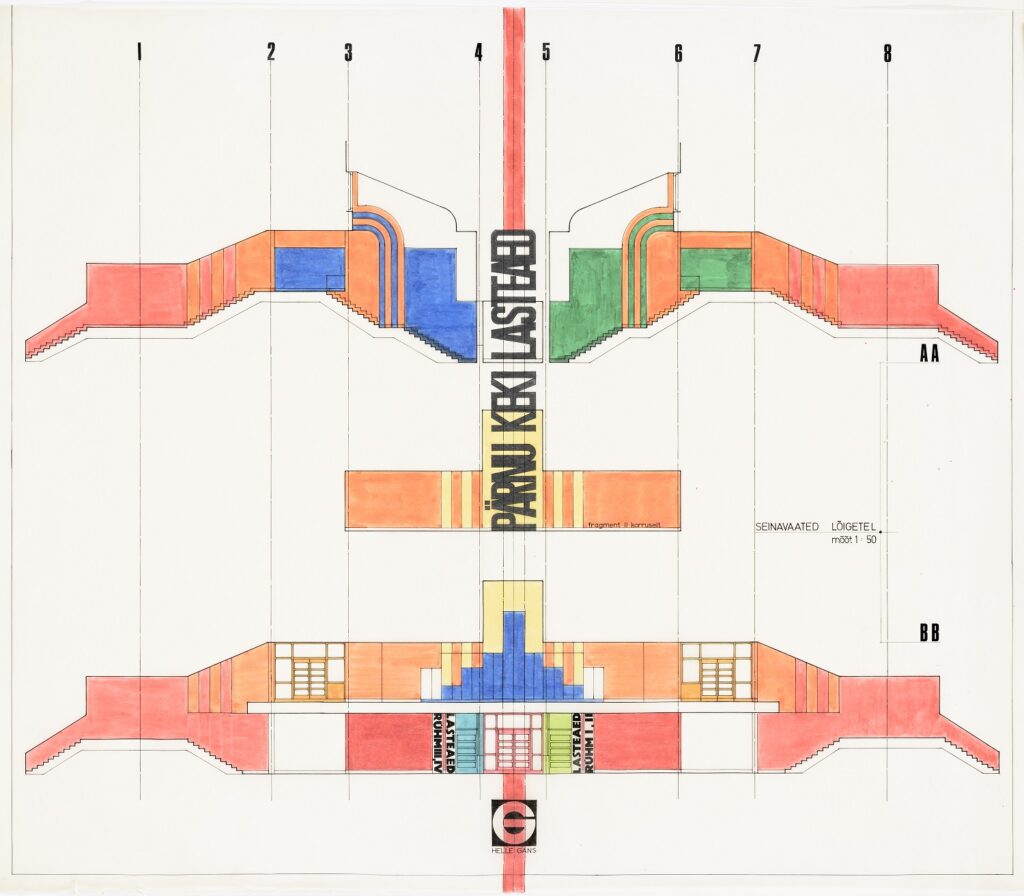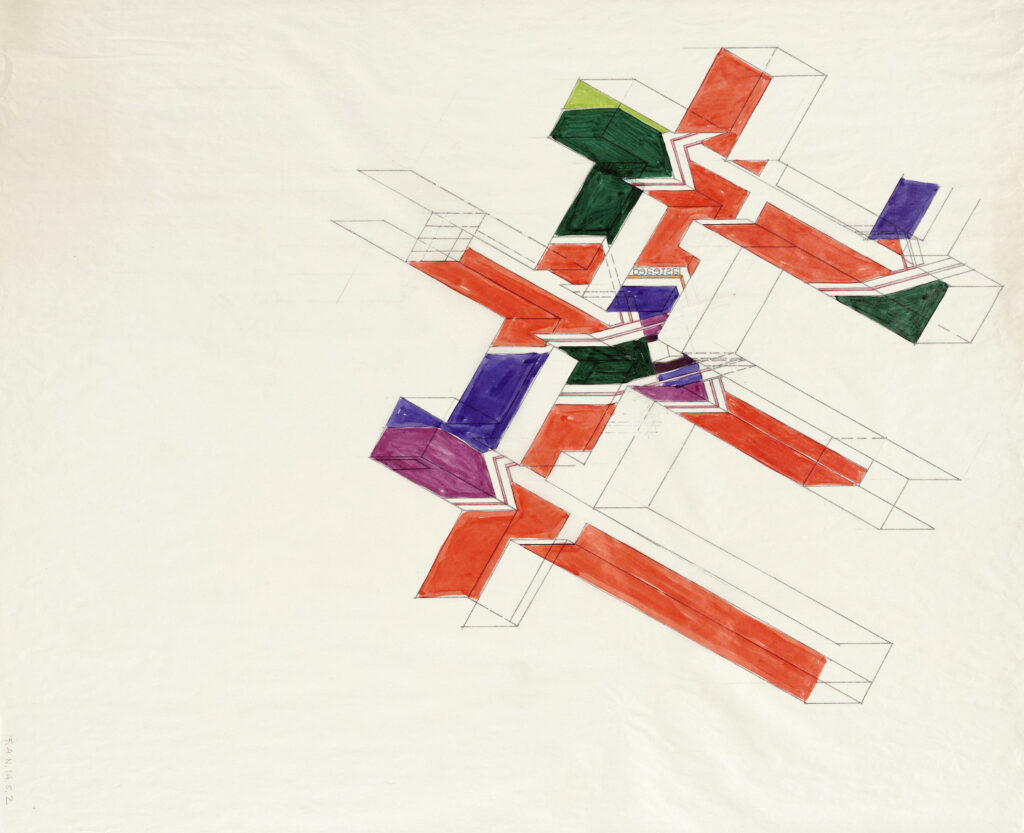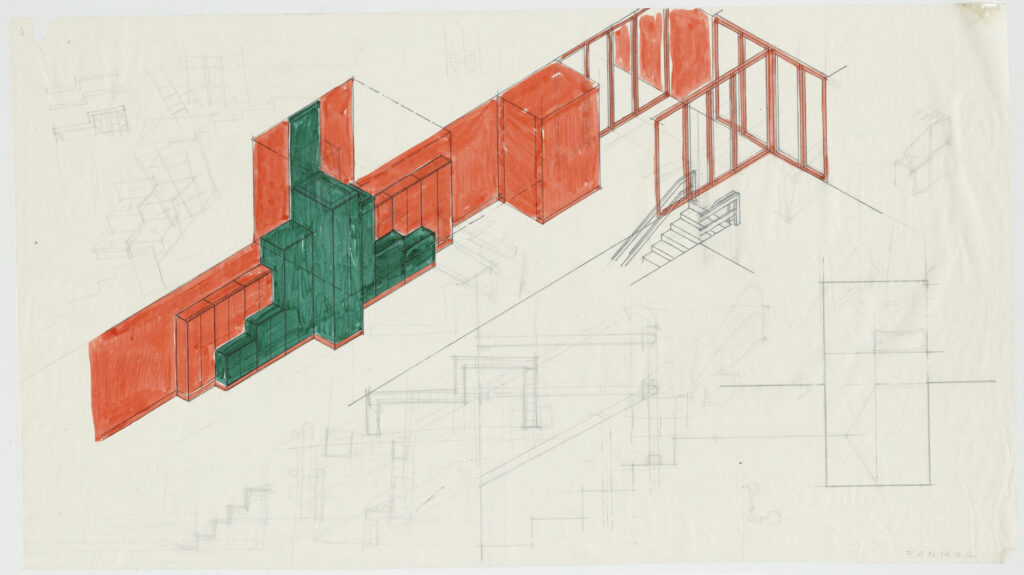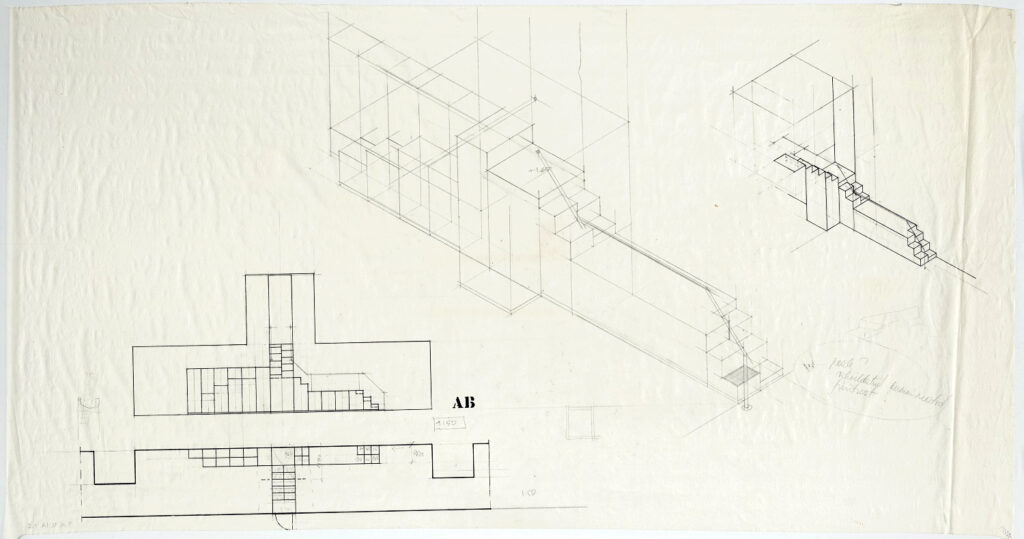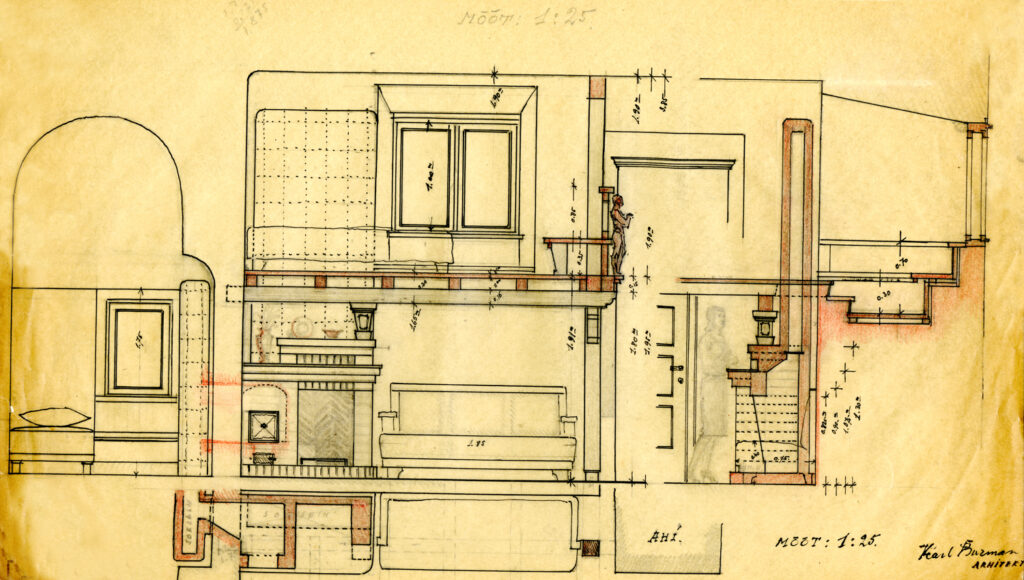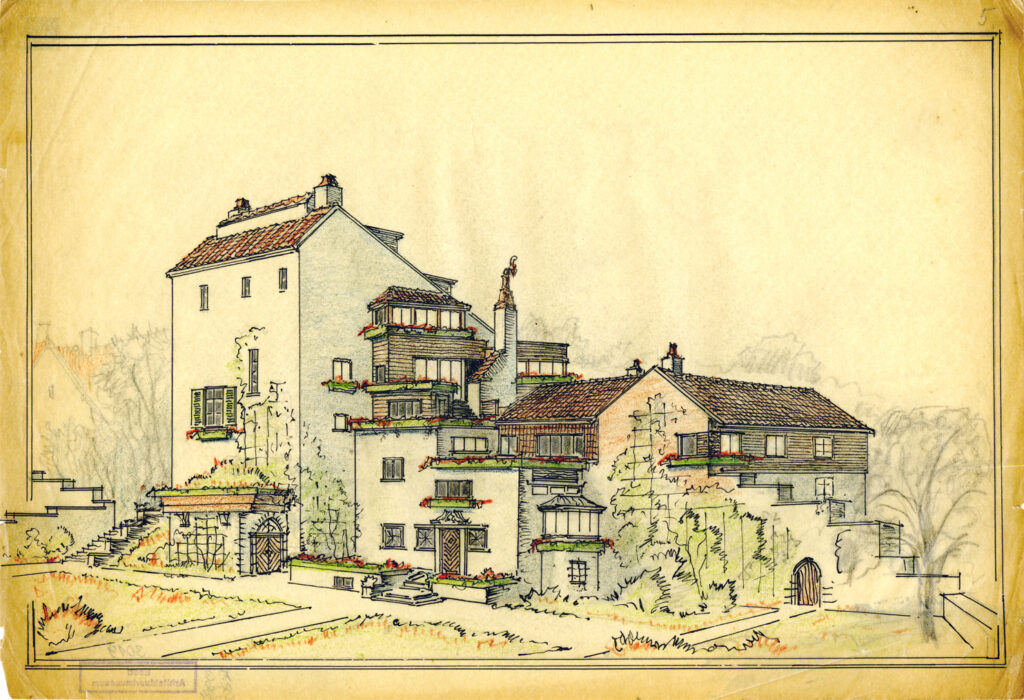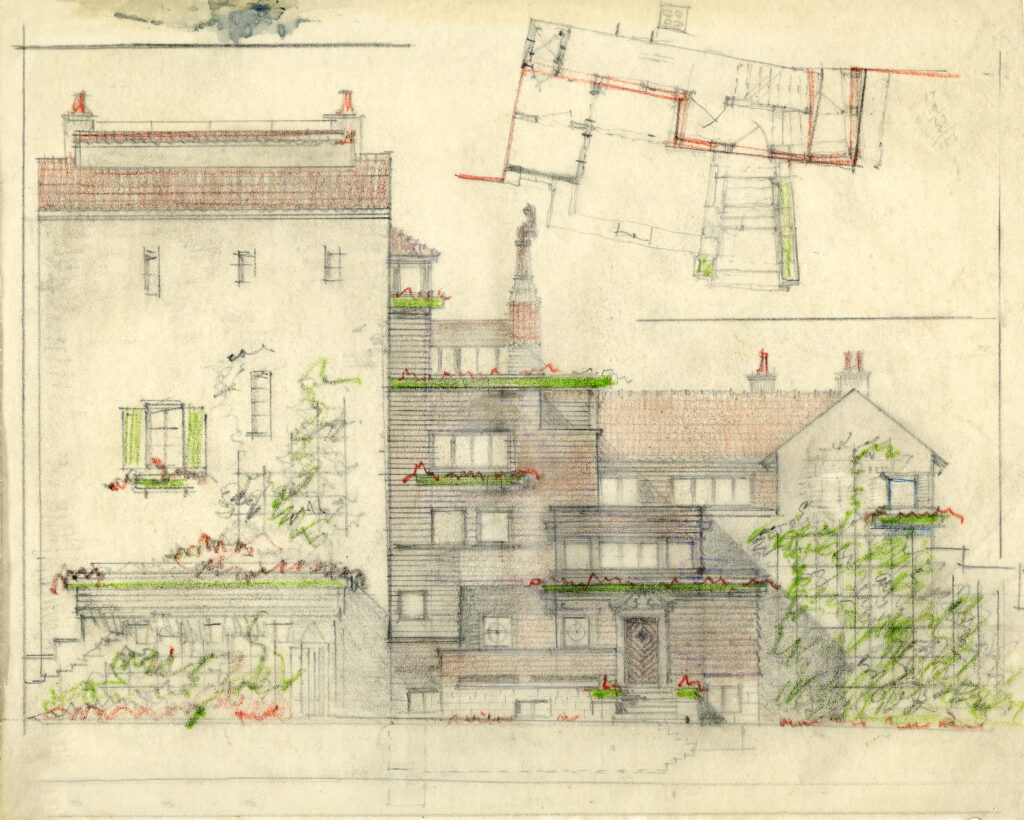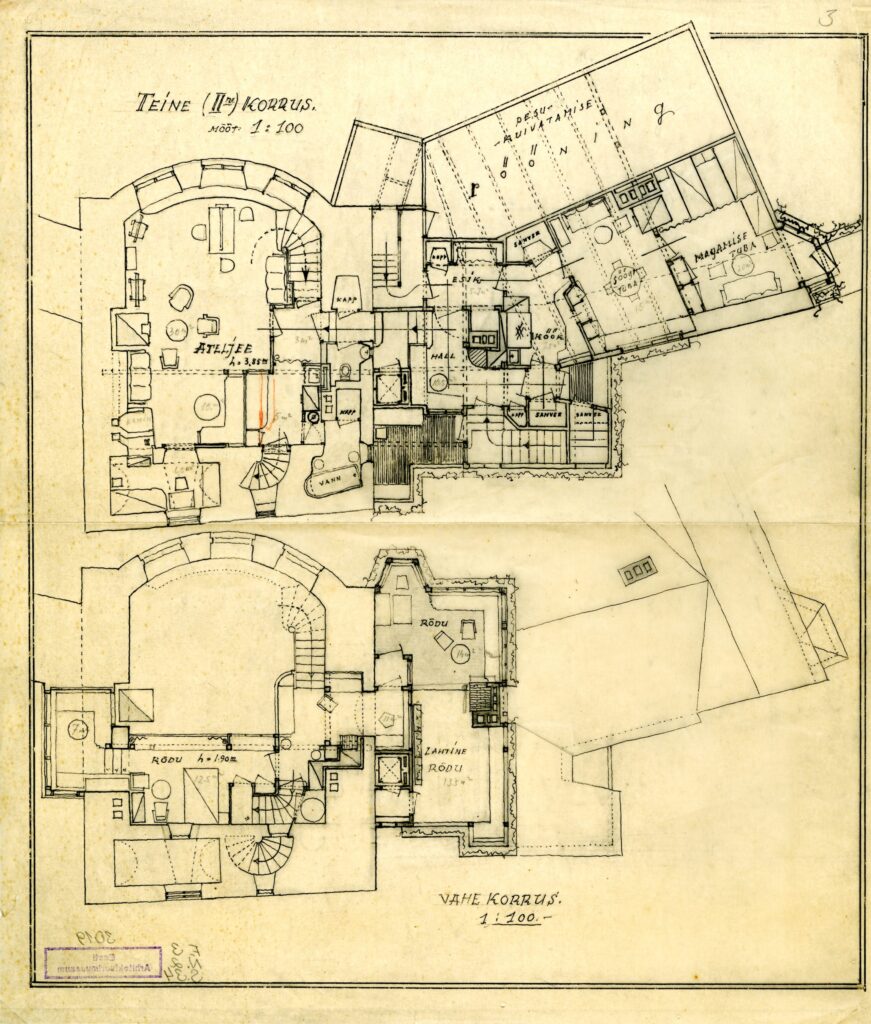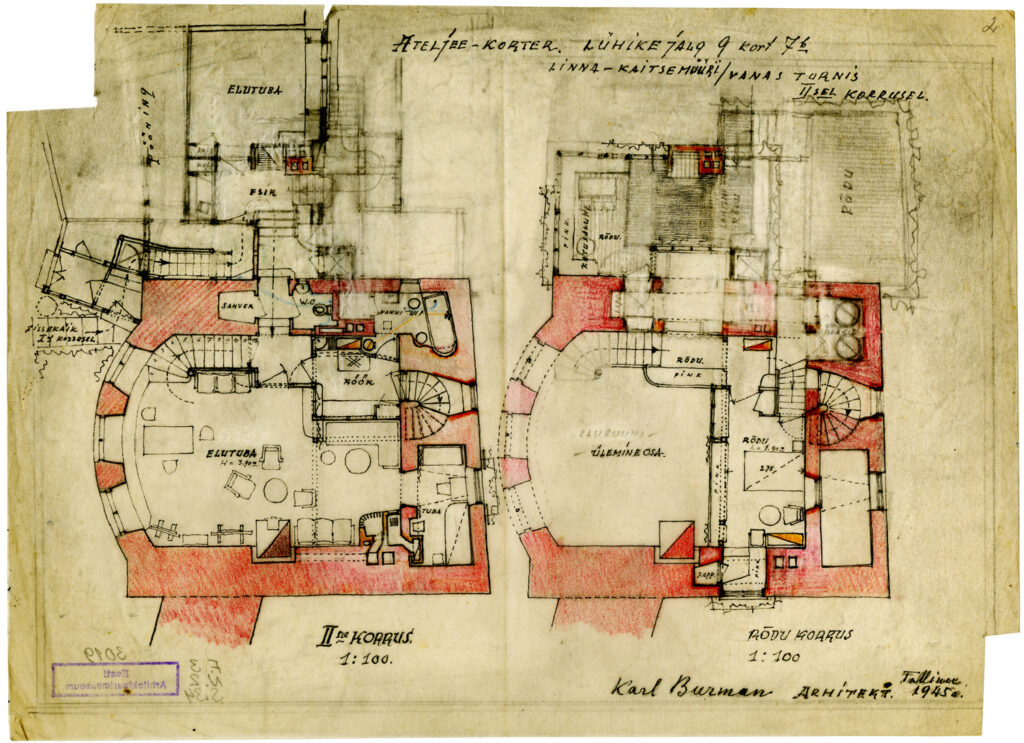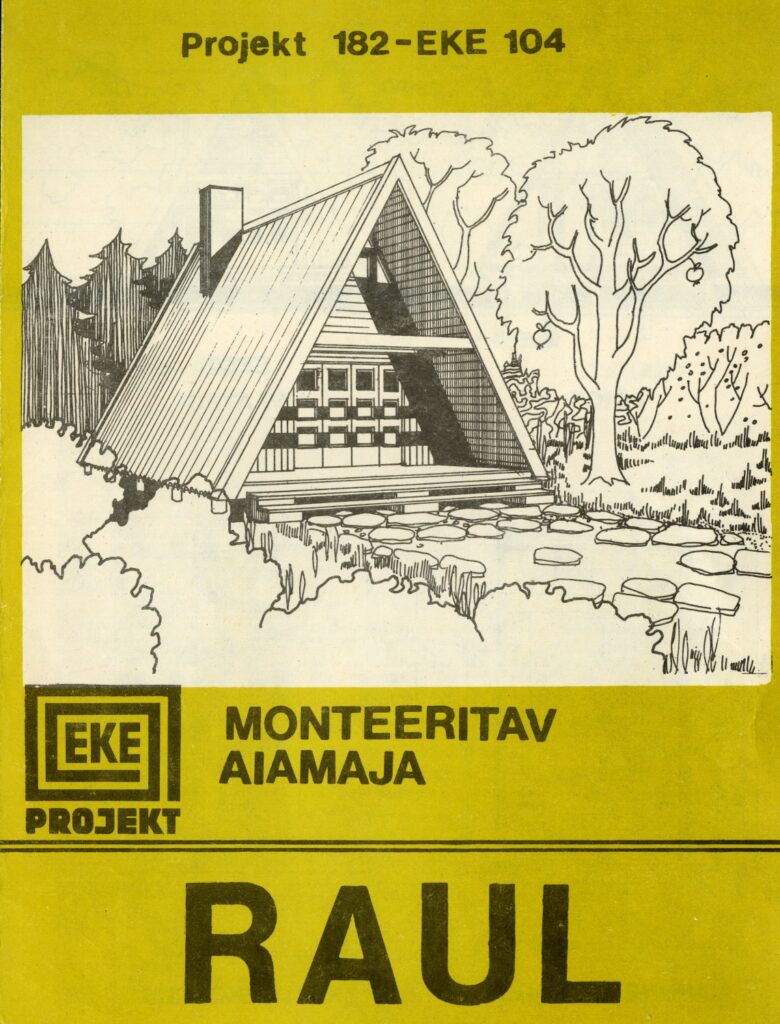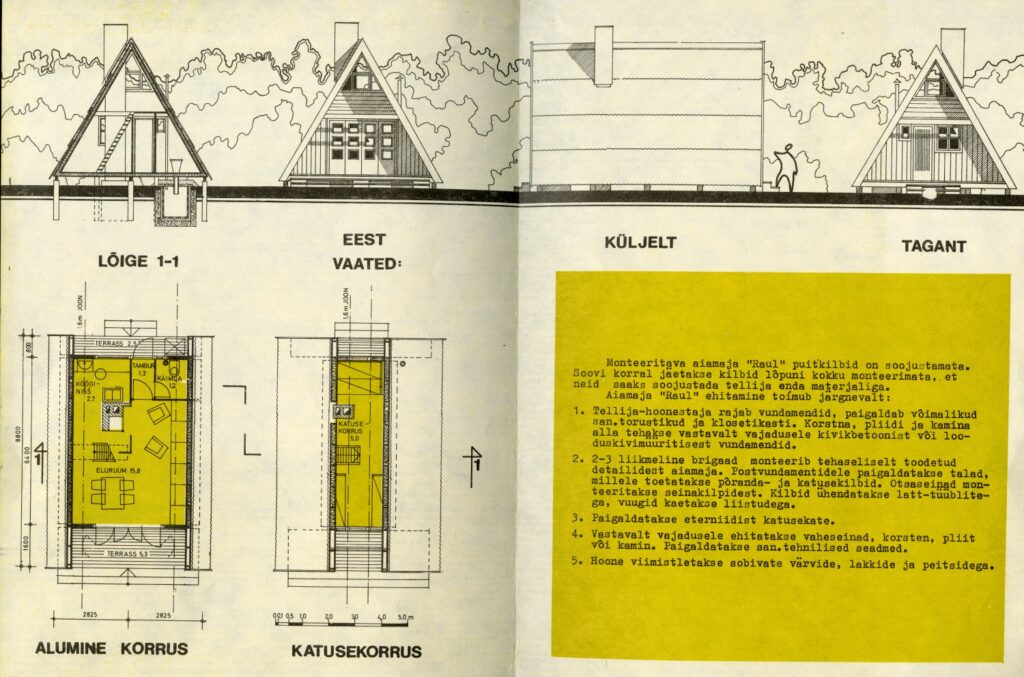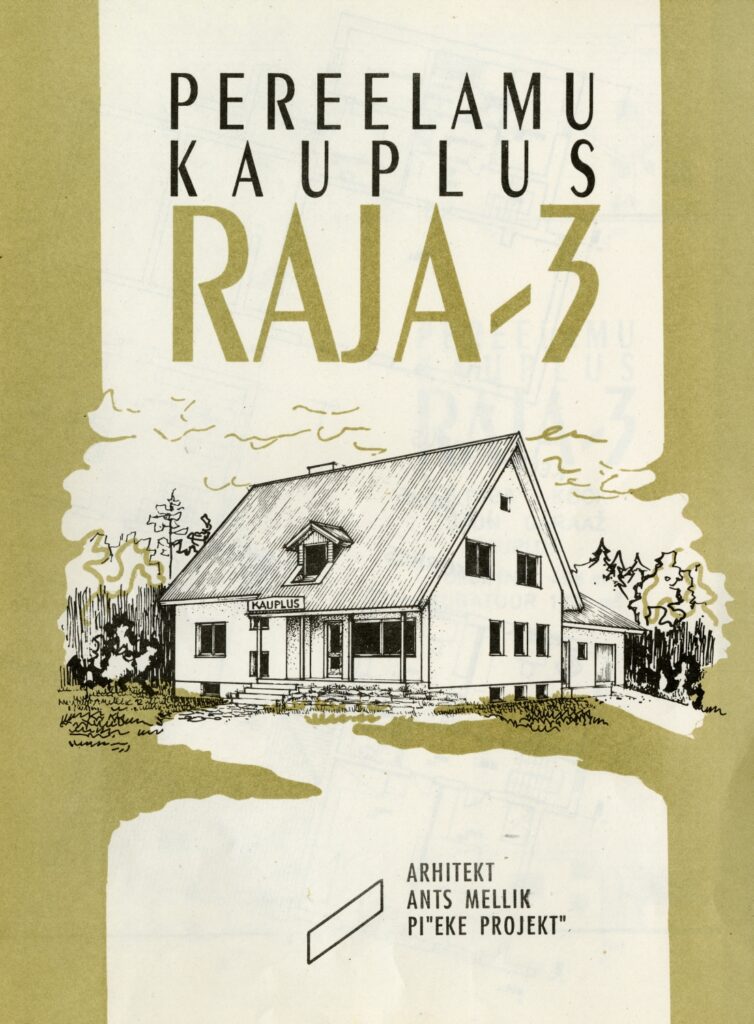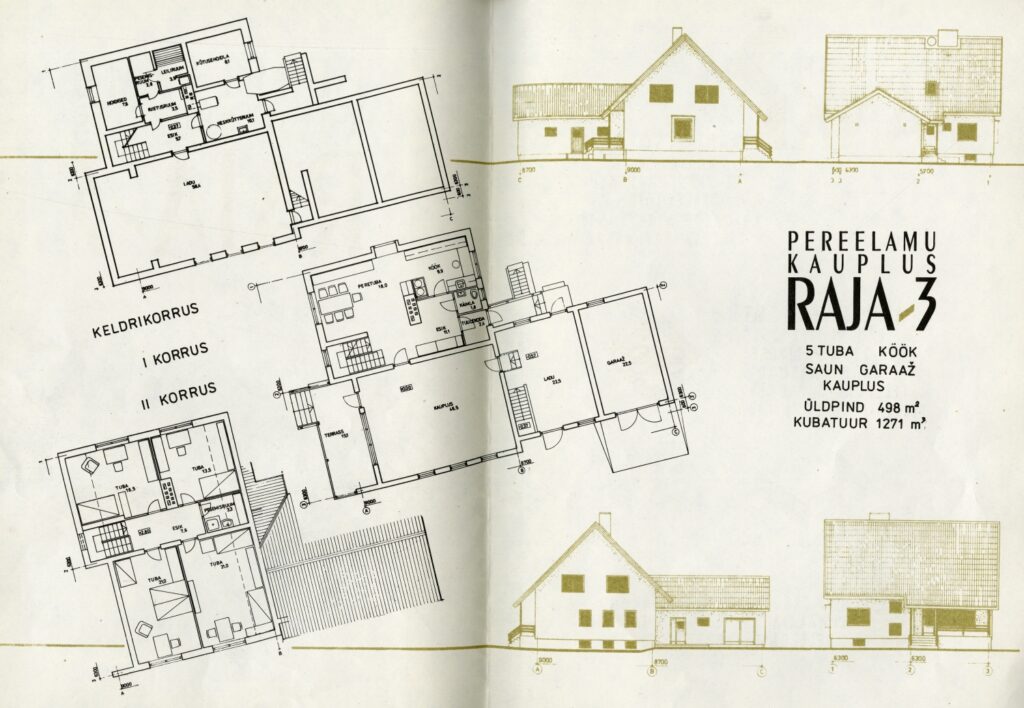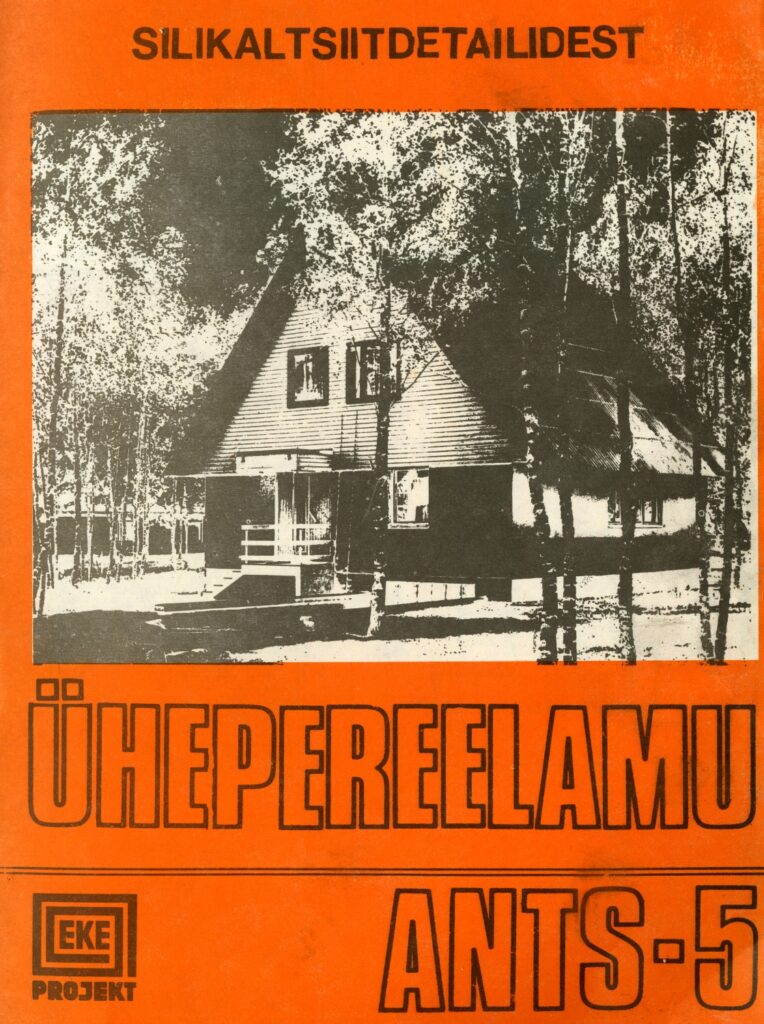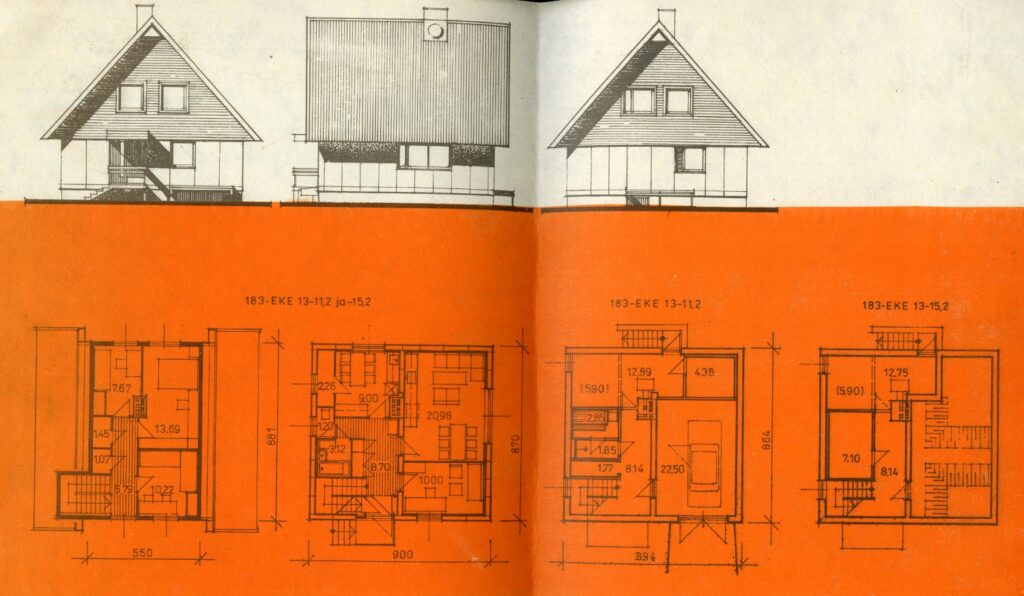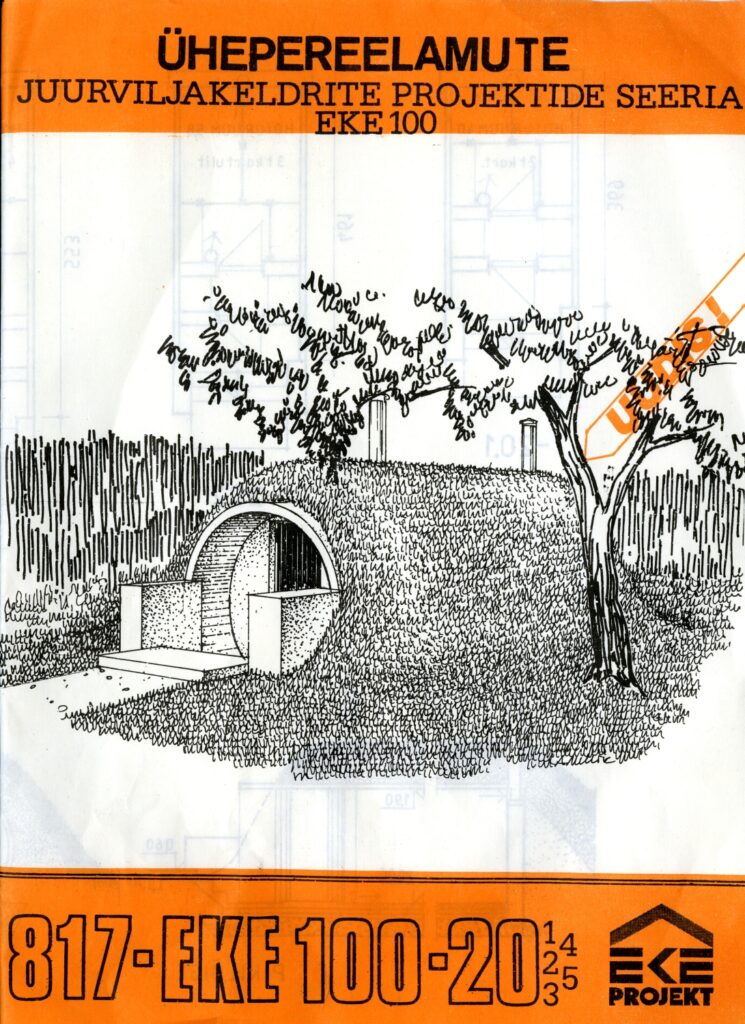-
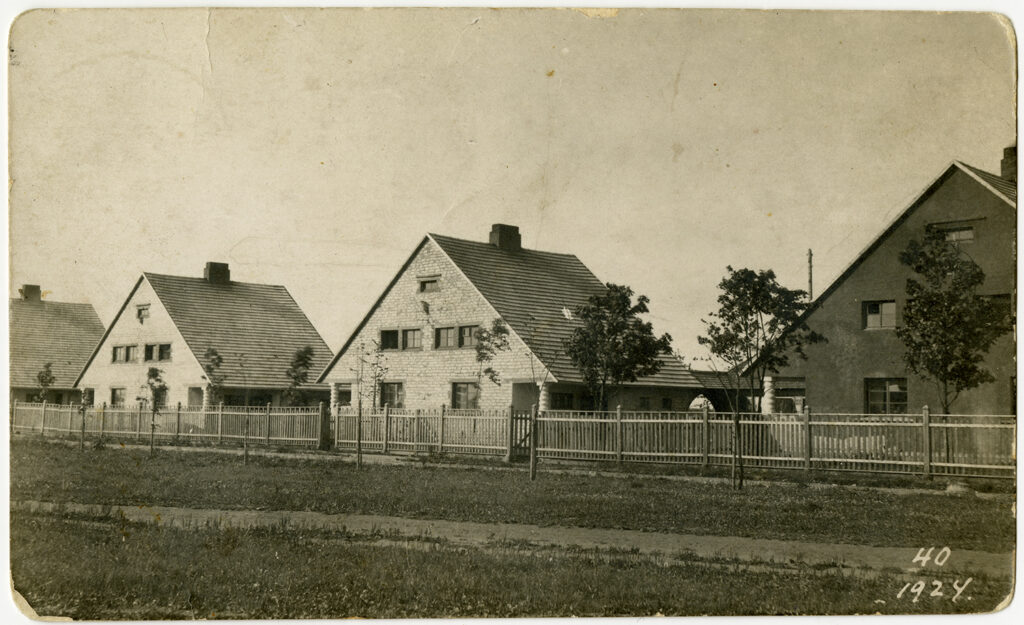
-
Workers´ housing in Kohtla-Järve, Eugen Habermann
-
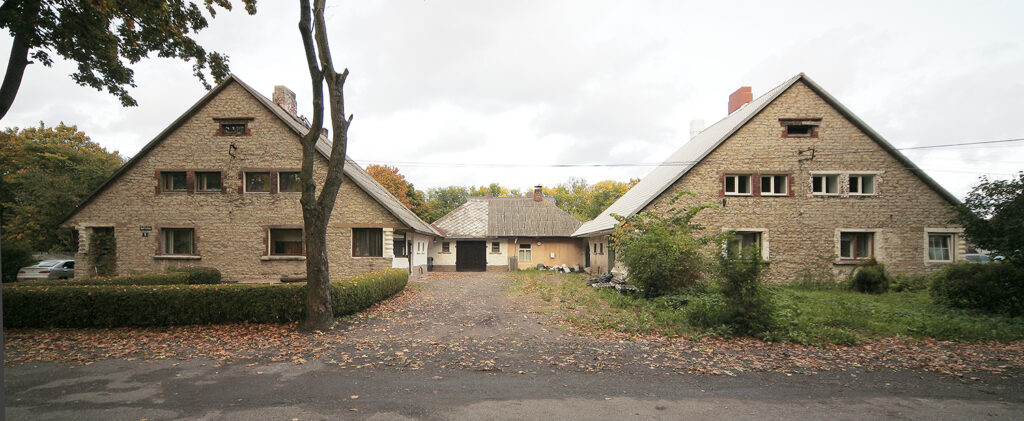
-
Workers´ housing in Kohtla-Järve, Eugen Habermann
Eugen Habermann, 1920–1921. EAM Fk 3105, Fk 15852
Workers´ housing in Kohtla-Järve
The Siidisuka neighborhood located in Kohtla-Järve has a garden city concept. The housing scheme was commissioned by the Estonian Oil-Shale Factory for its employees and built between 1920–21 according to the design of Eugen Habermann. This was one of the first urban concept in the life of the newly formed city. The name Siidisuka – which means Silk Stocking – shows the status of the habitats whom most were the leaders, engineers, and officers of the oil company and could afford buying silk instead of cotton fabrics to their family. The semidetached dwellings have unified concept with 4-5 different type of plans. The appearance of the houses are formed by the traditionalist trend and vernacular tendencies. In this case the architect blended the motifs of the modern architecture with characteristics of the local vernacular aspects such as the use of the rusticated limestone. The most characteristic elements are the precipitous sloping roofs and screwed pilasters. The buildings are linked with a perpendicular secondary house that divides inner and an external yard. The decorations on the façades, for example the typical zig-zag motifs show the influences of the architecture of the german expressionism. The photos were acquired by the museum in 1996 and new photos made by Martin Siplane in 2009 for the museum exhibition. Text: Anna Zsoldos
-
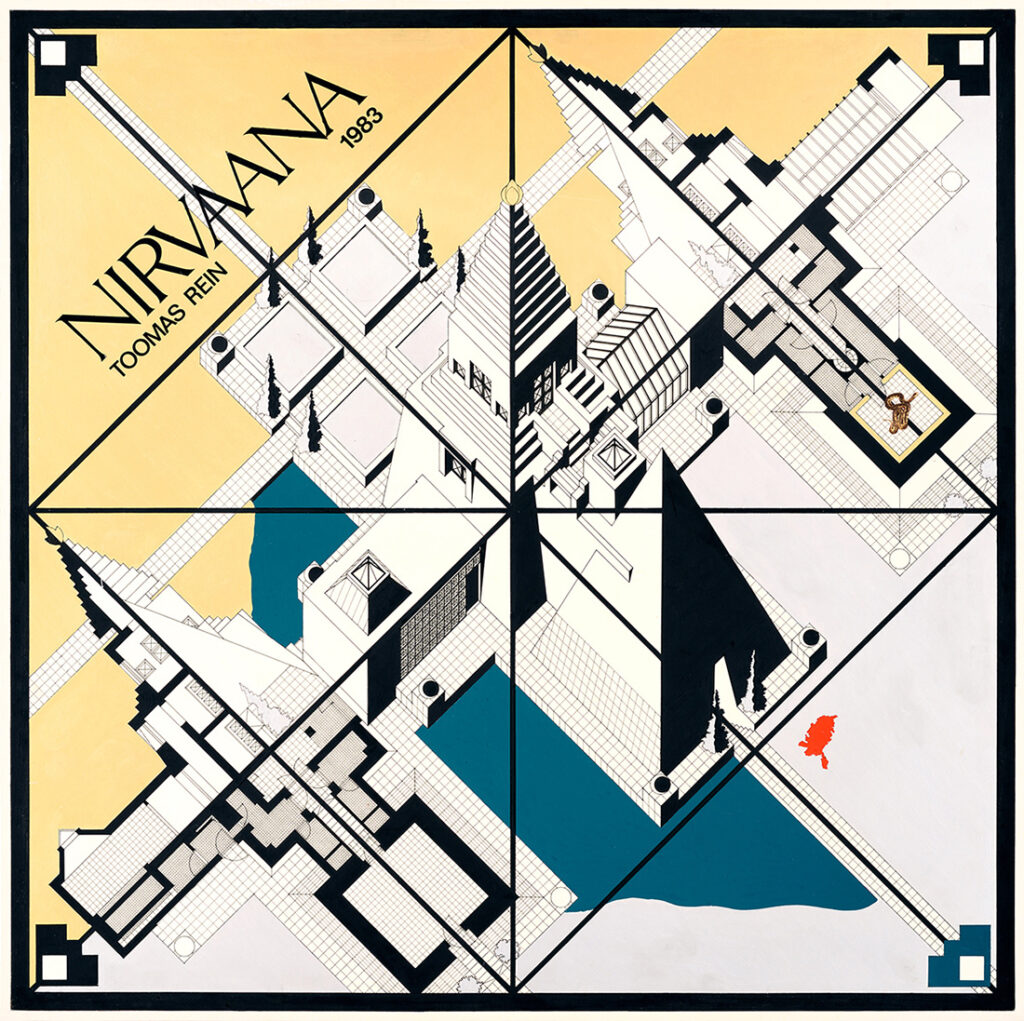
-
House Nirvana
Toomas Rein, 1983. EAM 48.2.9
House Nirvana
The house was designed for folk healer Vigala Sass in Saaremaa and contains a number of spiritual symbols. The client wanted to make it a refuge for supernatural powers. The leading motif of the room plan is founded on the four astrological main elements and the golden ratio. Rein has emphasised the artistic value of the work: axonometry is complemented by other ways of depiction in architecture; sections, plans and views are added from the corners on two sides of the house. Such architecture graphics can be seen as a desire to step away from the common official design practice and to take the role of architectural drawings to another level. The art piece was donated to the museum by Toomas Rein along with his other works from the 1980–1990s. Text: Sandra Mälk
1975–1978, Helle Gans. EAM 4.14.2
Interior design for the Trall kindergarten in Pärnu KEK
The interiors of the nursery school and crèche situated in the Pärnu Kolkhoz Construction Office residential quarter is one of a kind. The dynamics of the corridors, arising from the colour patterns from the signs in the ceiling, helped and directed children to the rooms of their group. The drawing contains several views. The layouts of the corridors are complemented by a group room in axonometrical view, which was furnished with expressive colourful furniture upon completion. Interior architect Helle Gans was guided by the realization that children reducen everything to the level of play. For that reason, the fold-out furniture and interior design are both functional and playful, stimulating children’s imaginations. The kindergarten displayed here is in line with the modern concept of the Pärnu KEK campus and takes after the pop-like infographic (Villu Järmut and Taevo Gans) of the inner street of the terraced apartment building Kuldne Kodu (Golden Home). In the year 2008 Andres Ringo gave the drawings to the museum. Text: Sandra Mälk
(click on the picture to see more)
-
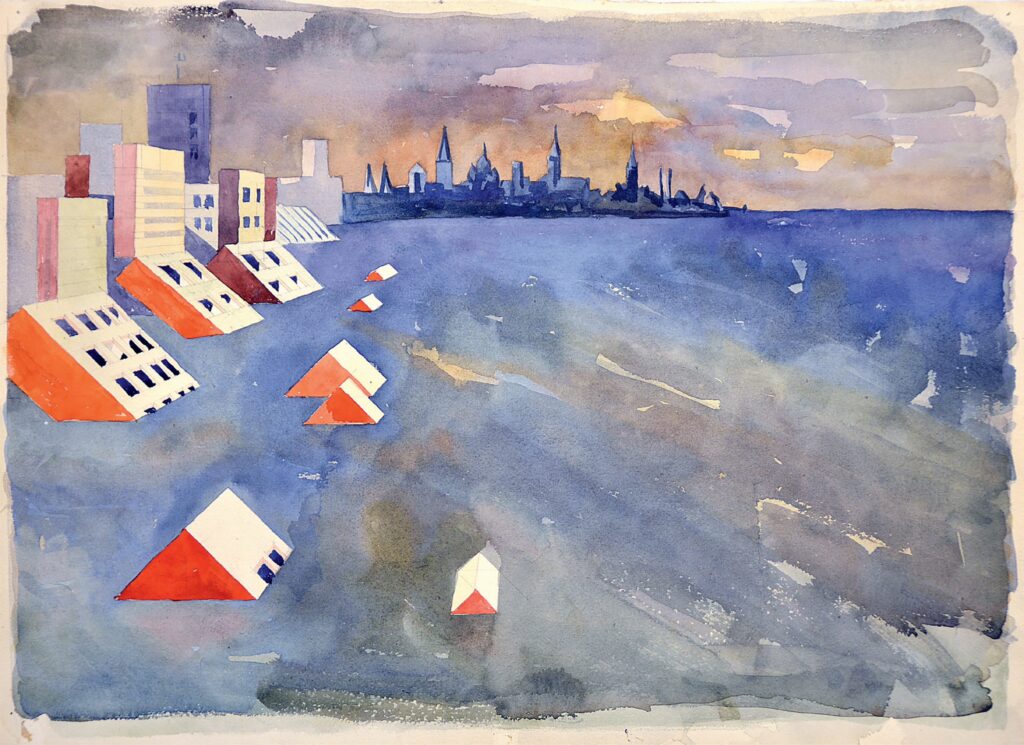
-
August storm in architecture
Avo-Himm Looveer, 1982. EAM K-48
August storm in architecture
The massive development of whole areas of prefabricated apartment houses in Tallinn during the 1970s and 1980s questioned the relationship between the new dwelling districts and the historical layers of the city. In criticisms of these general trends, it was suggested that architectural additions in a good living environment should consider the plurality of the urban fabric. In Avo-Himm Looveer’s work, monolithic elements seem to be sinking in the sea, with the skyline of Tallinn’s Old Town in the background, referring to the rapid development of Lasnamäe. In the architect’s vision this development moves beyond the boundaries of the residential zone and shows the artificial environment on a global scale. Its destruction by the forces of nature, on the other hand, refers to a breakthrough in how architecture is considered. The watercolour was acquired in 2010. Text: Sandra Mälk
-
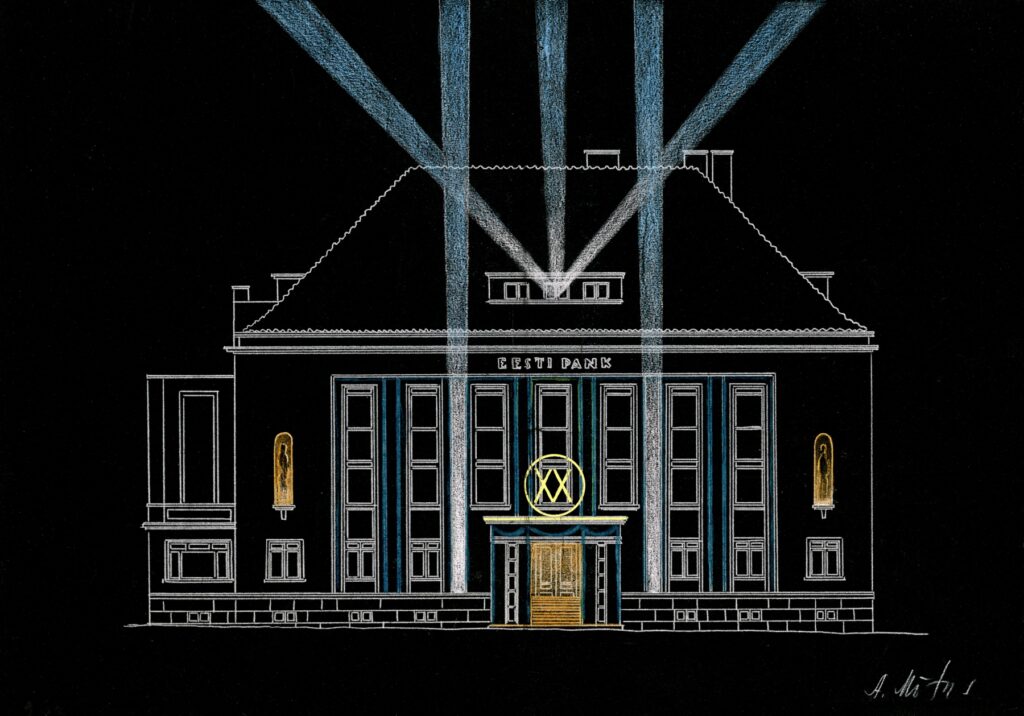
-
Lighting design for the bank building in Tartu
Aarne Mõttus (drawing), Arnold Matteus, Karl Burman. MEA 2.3.49
Lighting design for the bank building in Tartu
In 1936 the people of Tartu named the building of the Tartu branch of Eesti Pank (Bank of Estonia) (designed by Arnold Matteus and Karl Burman) as one of the most stately-looking new structures in the city. The bronze sculptures by sculptor Juhan Raudsepp add to the artistic integrity of the presentable façade. It was no coincidence that this bank building was also chosen as one of the public buildings to be decorated for the 20th anniversary of the Republic of Estonia. The lighting design for the façade, overseeing the square, was prepared by graphic and scenographer Aarne Mõttus. Drawing was donated by restoration firm Pindisain Ehitus in 2001. Text: Sandra Mälk
Karl Burman, 1945–1947. MEA 3.2.34
Reconstruction of the Neitsitorn tower into a studio apartment
Artist-architect Karl Burman lost his home in Kadriorg during the war and received new rooms in Neitsitorn (the Virgin’s Tower) in Old Town Tallinn, which had been an established gathering place for artists for a long time. The top floors of the tower housed a studio and living quarters. For 20 years the famous architect lived in a small one-room apartment within the thick walls of the medieval wall tower and planned to carry out reconstructions during his time there. In the sketches, Karl Burman has depicted the tower as a southern villa with spacious balconies and skylights, he also covered the façades with lush climbing plants. Every corner has been put into use – benches and built-in cupboards designed for the niches. The tower was restored and reconstructed as a cafeteria in 1968–1980. The drawings came to the museum via architect Teddy Böckler in 1994. Text: Sandra Mälk
EKE Projekt, 1970–1980. MEA
Standard designs of houses and summer cottages
The “EKE Projekt” was founded by inter-collective-farm construction company in 1966; it was based on co-operative ownership that lasted for 1992. The bureau was focused on rural architecture. Here on four hand-outs are some of the buildings designed by “EKE Projekt” to help homeowners and cooperatives pick a house. The project’s plans varied – from dwellings to shops and root cellars.
One of the main ideas of the prefabricated cabin Raul was to be easily built (engineer Rein Randväli). Known for its triangular structure, this small building had two levels: lower of which included living room, kitchenette and a toilet, and a small loft as the second floor. The family house and shop Raja-3 (architect Ants Mellik) had two functions combined. On the plan, the shop – along with the kitchen, family room, and garage – were situated on the ground floor, whereas the basement was used for storage space, sauna and utility rooms and the upper floor for bedrooms. Standard project for the one-family dwelling Ants-5 with five rooms comes from a rather popular series in the 1980s (designed by Ants Mellik). The façade of the house was covered by a combination of silicate and wooden lining. Ants-5 had various models, which differed – for example – by the structures of their basements. The vegetable cellar for one-family building (Toomas Lukk, Ants Mellik and Jaan Mõttus) was designed to be partially underground. This cement built cellar came in five variable sizes, smaller models meant for families to use and larger to store root vegetables also for sale. The roof could be covered with humus soil or grass. There are about 100 of these hand-outs of designs made in “EKE Projekt” in the museum collection. Text: Maria Pöppönen







